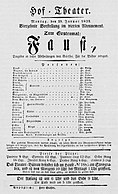
Braunschweig or Brunswick is a city in Lower Saxony, Germany, north of the Harz Mountains at the farthest navigable point of the river Oker, which connects it to the North Sea via the rivers Aller and Weser. In 2016, it had a population of 250,704.

Neuengamme was a network of Nazi concentration camps in northern Germany that consisted of the main camp, Neuengamme, and more than 85 satellite camps. Established in 1938 near the village of Neuengamme in the Bergedorf district of Hamburg, the Neuengamme camp became the largest concentration camp in Northwest Germany. Over 100,000 prisoners came through Neuengamme and its subcamps, 24 of which were for women. The verified death toll is 42,900: 14,000 in the main camp, 12,800 in the subcamps, and 16,100 in the death marches and bombings during the final weeks of World War II. Following Germany's defeat in 1945, the British Army used the site as an internment camp for SS and other Nazi officials. In 1948, the British transferred the land to the Free Hanseatic City of Hamburg, which summarily demolished the camp's wooden barracks and built in its stead a prison cell block, converting the former concentration camp site into two state prisons operated by the Hamburg authorities from 1950 to 2004. Following protests by various groups of survivors and allies, the site now serves as a memorial. It is situated 15 km southeast of the centre of Hamburg.

The Duchy of Brunswick was a historical German state that ceased to exist in 1918. Its capital was the city of Brunswick. It was established as the successor state of the Principality of Brunswick-Wolfenbüttel by the Congress of Vienna in 1815. In the course of the 19th-century history of Germany, the duchy was part of the German Confederation, the North German Confederation and from 1871 the German Empire. It was disestablished after the end of World War I, its territory incorporated into the Weimar Republic as the Free State of Brunswick.

The Free State of Brunswick was a state of the German Reich in the time of the Weimar Republic. It was formed after the abolition of the Duchy of Brunswick in the course of the German Revolution of 1918–19. Its capital was Braunschweig (Brunswick). In 1933 it was de facto abolished by Nazi Germany. The free state was disestablished after the Second World War in 1946.
The Battle of Ölper was a battle at Ölper, now a district of Brunswick, on 13 October 1761. It occurred between a Franco-Saxon force and a Brunswick-Hanoverian force, lasted long into the night and ended in a Brunswickian victory. It was part of the Seven Years' War.

The Battle of Ölper took place on 1 August 1809 in Ölper, currently a district of the town of Brunswick, as part of the War of the Fifth Coalition. It pitched troops of the Kingdom of Westphalia against the Black Brunswickers under Frederick William, Duke of Brunswick-Wolfenbüttel, but ended in a tactical draw.

Braunschweigisches Landesmuseum (BLM) is a history museum in Braunschweig, Germany, operated by the state of Lower Saxony. The museum is scattered on four locations: Vieweghaus, Hinter Ägidien, Kanzlei (Wolfenbüttel) and Bauernhausmuseum (Bortfeld).
The following is a timeline of the history of the city of Nuremberg, Germany.
The following is a timeline of the history of the city of Hamburg, Germany.
The following is a timeline of the history of the city of Bremen, Germany.
The following is a timeline of the history of the city of Hanover, Germany.

The following is a timeline of the history of the city of Dortmund, Germany.
The following is a timeline of the history of the city of Chemnitz, Germany.
The following is a timeline of the history of the city of Kassel, Germany.
The following is a timeline of the history of the city of Würzburg, Bavaria, Germany.
The following is a timeline of the history of the city of Linz, Austria.
The following is a timeline of the history of the city of Salzburg, Austria.

Viewegsgarten-Bebelhof is a Stadtbezirk (borough) in the southern part of Braunschweig, Germany. The district has a population of 13,121 (2020).
Wilhelm de Raet was a Dutch hydraulic engineer and master builder, most notable for his work in Lucca in Italy.





















